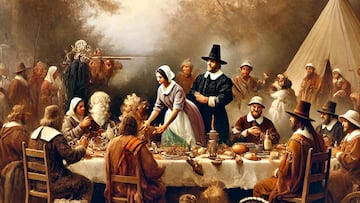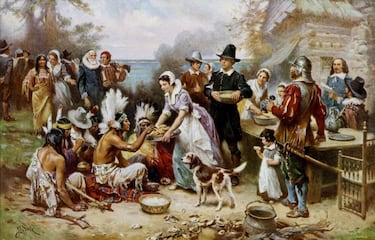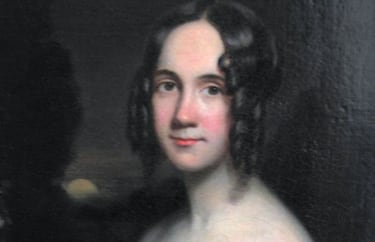This is what happened on the first Thanksgiving: the real reason why we celebrate it
The iconic image that Thanksgiving conjures up is of the famous 1621 feast between Pilgrims and Native Americans, but there’s more to the story.

On Nov. 27, millions of families around the country will celebrate Thanksgiving, a holiday whose origins date back centuries. Thanksgiving is one of the biggest holidays in the United States where people sit down to a meal and give thanks for what they have.
The iconic image that the holiday conjures is that of the famous 1621 feast between Pilgrims and Native Americans in Plymouth, Massachusetts. While that is the symbolic start of the tradition, it wouldn’t become an official holiday until over two centuries later.

The origins of Thanksgiving
Thanksgiving has its roots in older traditions from Europe of celebrations for the end of conflict, arriving safely to a destination, and a good harvest. Such celebrations took place before the mythologized Thanksgiving of 1621 seen as the first Thanksgiving. The earliest one recorded between Native Americans and Europeans took place in modern day Florida back in 1565 between Spanish explorers and the local Timucua.
But the one we imagine and has become part of our folklore took place in 1621 in Plymouth, Massachusetts. On that occasion the Pilgrims who had set out for the New World a year earlier were celebrating having had a successful harvest after the hardships of their voyage and the first winter in their new home had decimated their numbers by half. The Wampanoag, the tribe living in the area where the Pilgrims arrived, supported the newly established community, after seeing them struggle to grow crops in an environment unfamiliar to them. After the first productive harvest was collected, the Pilgrims and members of the Wampanoag came together, a short lived peace that would turn bloody in the coming decades.
In early American history, Thanksgiving feasts were also held after major victories in battle. The first “national” Thanksgiving was proclaimed by George Washington after the Americans’ victory over the British at the battle of Saratoga, celebrated on 18 December, 1777.
A nation in turmoil needs to be brought together
For many years the Thanksgiving celebration was a regional affair with celebrations proclaimed by local or state governments and sometimes a presidential decree. The division between North and South pre-civil war was also present with regards to Thanksgiving with the concept relatively foreign in the South. At this time the US was expanding rapidly to the west and tension over whether or not the new lands would allow slavery were dividing the nation in two.

Sarah Josepha Hale, or the “Mother of Thanksgiving”, who began a letter writing campaign in 1846 to government officials both at the state and national level to push for a national Thanksgiving holiday. For 17 years she sent letters until the US found itself in the grip of the Civil War and a president looking for a way to bring the nation together took up her cause. Abraham Lincoln, in 1863, proclaimed that the last Thursday of November “as a day of Thanksgiving and Praise to our beneficent Father who dwelleth in the Heavens.” However, it would not be until the Reconstruction era that Thanksgiving gained popularity as a national holiday celebrated by communities and families across the ever expanding American territory.
The modern Thanksgiving
Thanksgiving in modern times is not as religious a day as it was in the past. Thanksgiving today is the start of the Christmas shopping season, at least it used to be although the start seems to be creeping up ever earlier. In 1939 during the Great Depression, Thanksgiving was set to fall on 30 November which would have left only 24 days until Christmas. Additionally, the notion of a holiday that is based on gratitude makes it accessible to people of different faiths and cultures. Though there are typical Thanksgiving dishes, the recipes used and additions to the table represent the diversity of the country.
Then President Franklin D Roosevelt in an effort to stimulate the economy moved the holiday up a week to give people more time to shop. It did not go over well, with critics calling it “Franksgiving.” After some wrangling Congress set the date to always be the fourth Thursday of November in 1941.
Today we associate Thanksgiving with getting together with family, the Macy’s Thanksgiving Parade and football. It is one of the few days we actually get to kick back and relax (if you’re not in the kitchen), eat too much turkey (and for weeks afterwards) and then fall asleep on the sofa watching football.
Related stories
Get your game on! Whether you’re into NFL touchdowns, NBA buzzer-beaters, world-class soccer goals, or MLB home runs, our app has it all.
Dive into live coverage, expert insights, breaking news, exclusive videos, and more – plus, stay updated on the latest in current affairs and entertainment.Download now for all-access coverage, right at your fingertips – anytime, anywhere.



Complete your personal details to comment